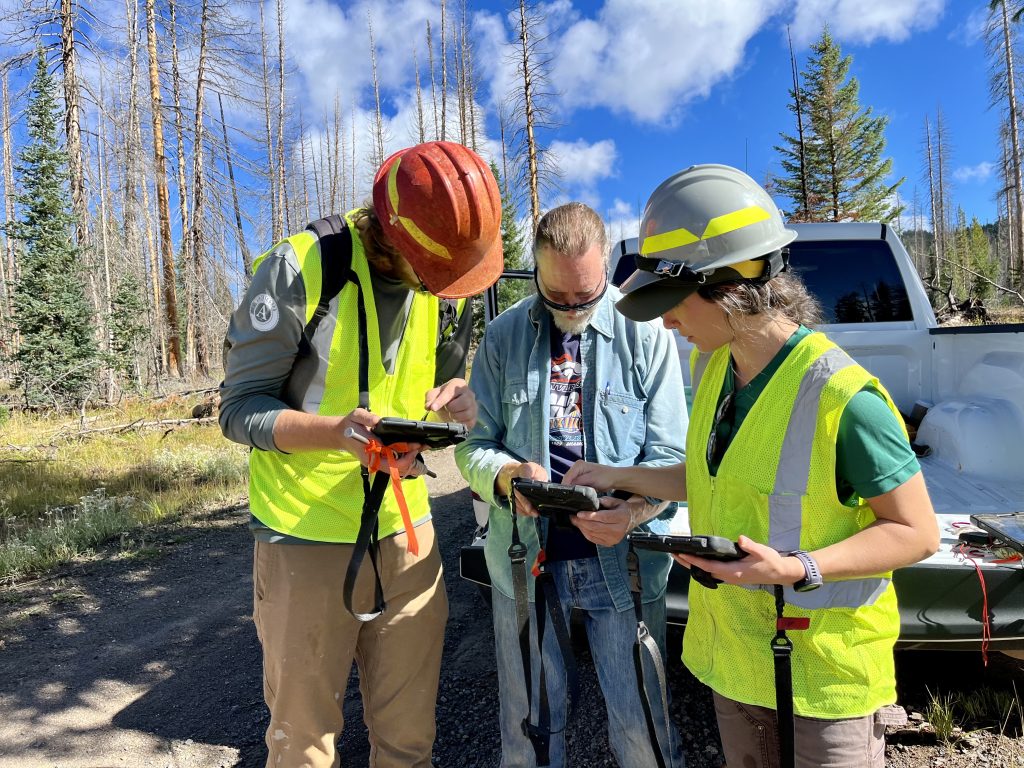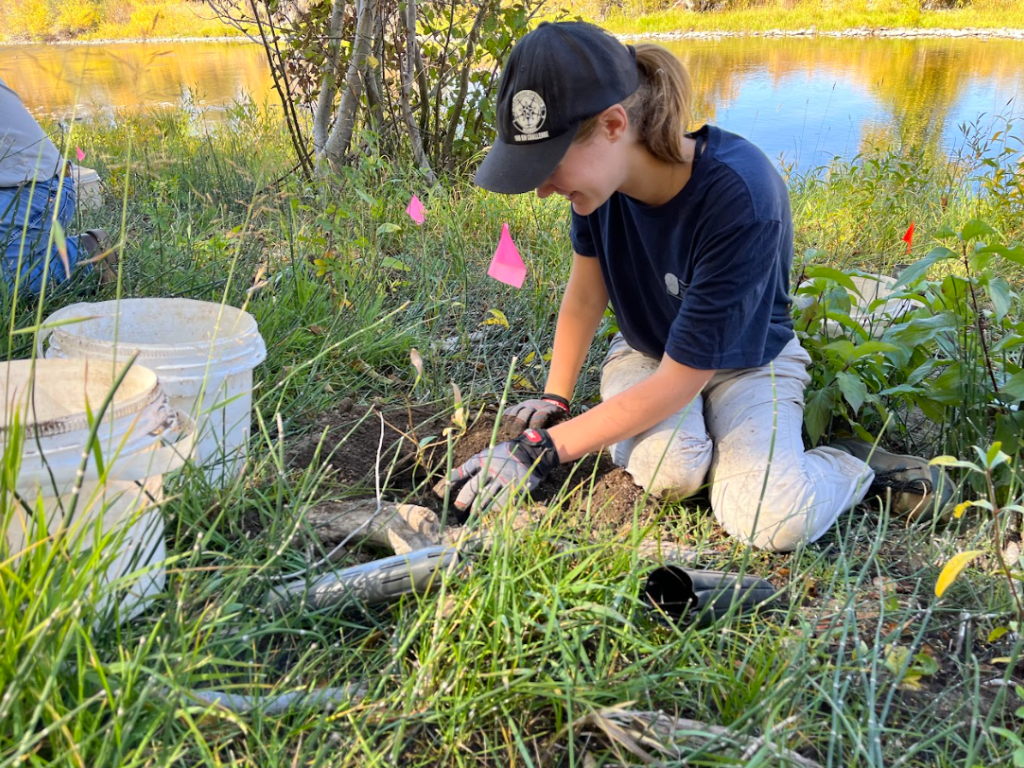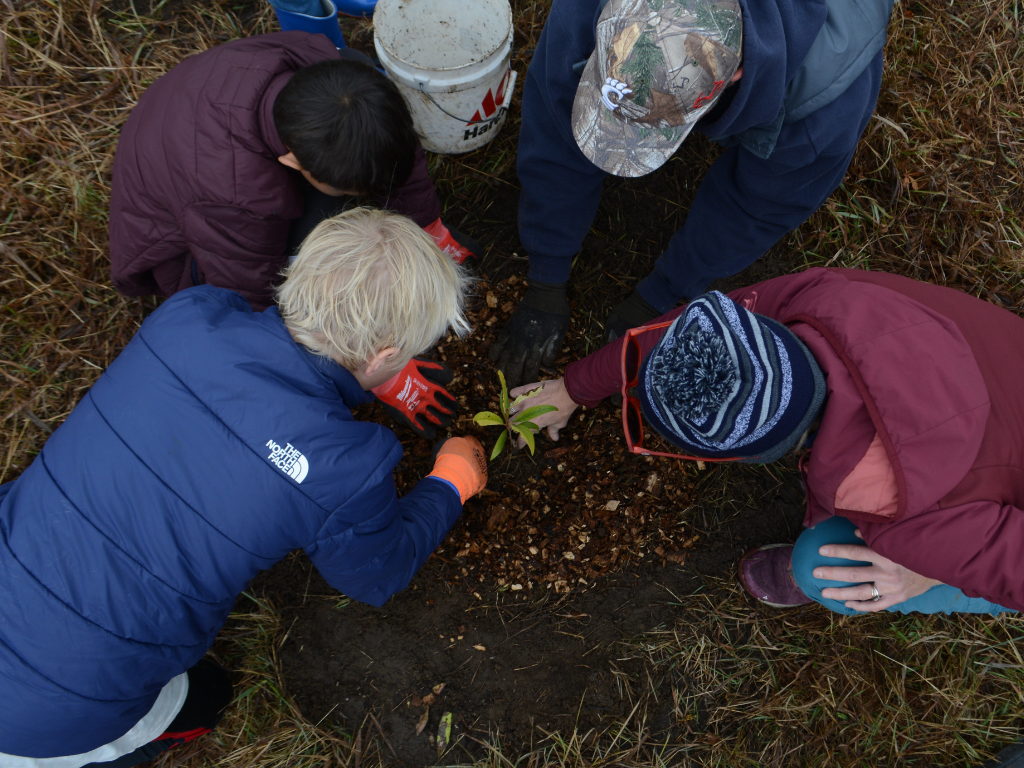 My name is Ruby Stephens, and I am working as the Forest Resilience Intern this summer with YVSC. I am most curious about social ecology, or the study of the dynamic interrelationships between humans and the environment. Here at YVSC, my project is centered around communicating the importance of forest resilience and forest regeneration surveys, as well as building community involvement in forest health. Understanding ecological memory is an important component of this work.
My name is Ruby Stephens, and I am working as the Forest Resilience Intern this summer with YVSC. I am most curious about social ecology, or the study of the dynamic interrelationships between humans and the environment. Here at YVSC, my project is centered around communicating the importance of forest resilience and forest regeneration surveys, as well as building community involvement in forest health. Understanding ecological memory is an important component of this work.
The lodgepole pine trees that speckle forests of the Rocky Mountains convey a powerful message about the concept of ecological memory; the familiar tall and spindly trees are a relic of the past, a testament to resilience, and a guide for the future. Ecological memory is central to the concept of resilience, or an ecosystem’s ability to respond to disturbance. Every ecosystem has some inherent level of resilience to its own unique, natural disturbance regime (i.e. high severity fires vs. low severity fires). Therefore, the species that found ecosystems embody traits that make them resilient, too.

Lodgepoles, for example, have evolved a unique reproductive strategy: they produce small, resinous cones that require the heat of wildfire to open, eventually allowing them to germinate and establish as new trees. This pattern of the lodgepole life-cycle is known as a life-history trait. Species’ life-history traits and their physical legacies (the cones!) are what comprise ecological memory. Lodgepole pine cones and their response to fire is just one constituent of a complex and interwoven ecosystem of legacies. All to say, the forests here know fire well — so why is their resilience still declining, and what can we do about it?
Climate change is causing drier and warmer conditions, leading to larger and more intense wildfires than what alpine and subalpine forests are evolved to recover from. This shift reduces the viability of lodgepole pine cone mechanisms, alongside an array of other species’ legacies.
Forests here face multiple threats alongside climate change, including the consequences of historic fire suppression, severe bark beetle outbreaks, land-use change, and fragmentation, to list a few. Such compounded human-caused disturbances are incongruent with natural disturbance regimes, and when ecosystems inevitably fail to bounce back, losses accumulate as “resilience debt.” Resilience debt, similar to financial debt, amplifies an ecosystem’s vulnerability to disturbance and increases the potential for cascading system failures.
“In lieu of losing hope, I suggest we listen to the lodgepoles. Their struggle to regrow is a glaring sign of a growing dissonance between humans and the environment.”
This can manifest in forests as an inability to regrow, which is becoming a trend in post-burn areas of Routt County. Intact forests preserve biodiversity, watershed health, and ecosystem services — both the tangible and intangible benefits that forests provide to humans — so there is a lot at stake. Furthermore, because the trajectory of ecosystem change is non-linear, small and less concerning losses may occur initially, but those are followed by unpredictable and abrupt ecosystem state changes if threats persist. Thus, managing for ecosystem resilience in the face of climate change is challenging, as past management strategies no longer serve as a reasonable model for an unpredictable future.
So, in lieu of losing hope, I suggest we listen to the lodgepoles. Their struggle to regrow is a glaring sign of a growing dissonance between humans and the environment. The lodgepoles are telling us to change, and, in the meantime, we need to help them grow back! YVSC staff and volunteers, in collaboration with the US Forest Service, are focusing efforts toward conducting regeneration surveys, as well as tree planting events (where YOU can come hang out with cool people and cute baby lodgepoles!). The data from regeneration surveys will prompt further tree planting in areas that are not regrowing naturally, so they are a valuable way to help restore forest resilience. In order to care for the ecosystems which sustain us, we must be attentive to their struggles amidst the climate crisis and participate in active restoration efforts.
Ruby Stephens | 5 August 2024






